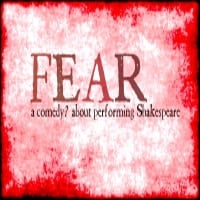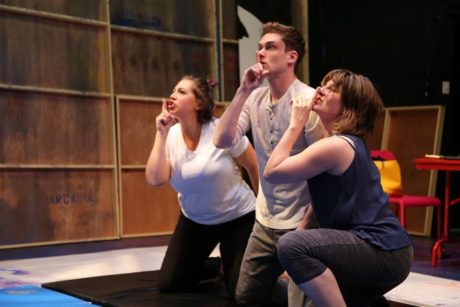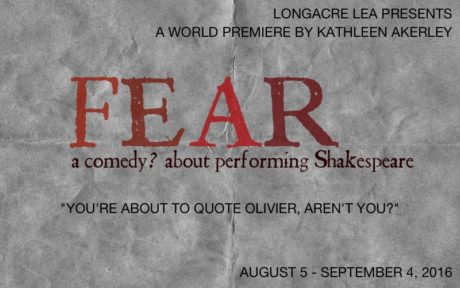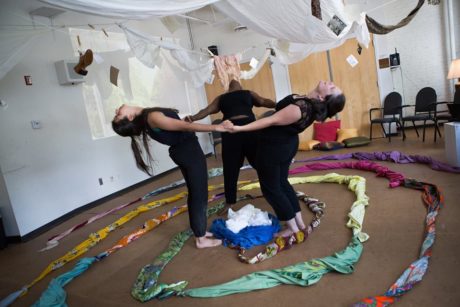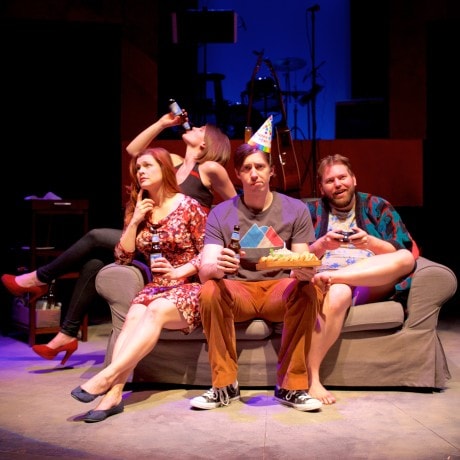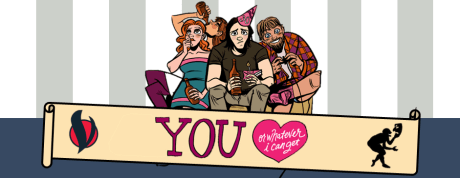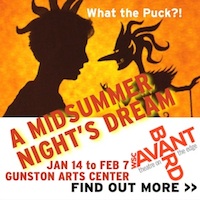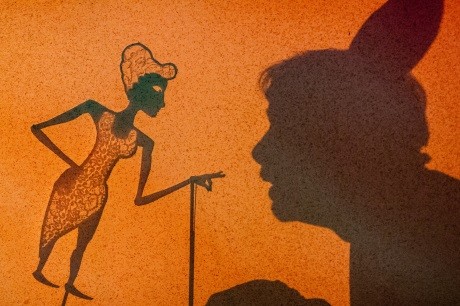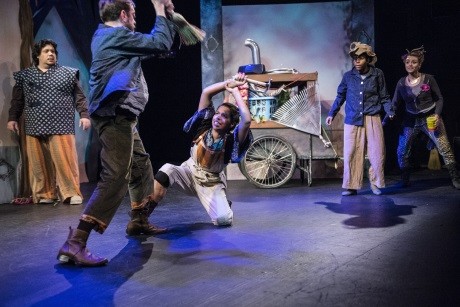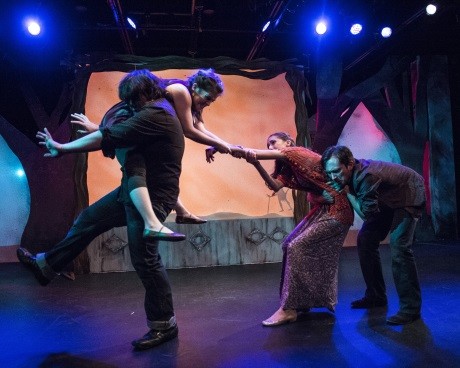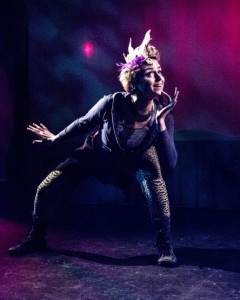Imagine a world in which death no longer exists.
Rorschach Theatre’s current production of A Bid to Save the World – a new play by California based playwright Erin Bregman – asks audiences to do just that. The play, with bold and colorful direction by Lee Liebeskind, explores humanity’s relationship with death, drawing on ancient myths and futuristic imaginings.
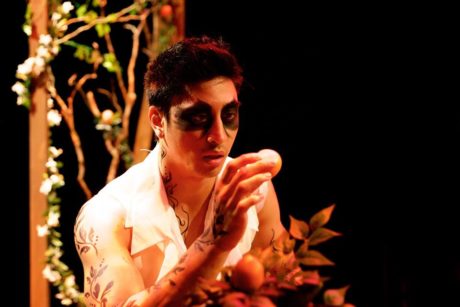
Rather than a linear story, A Bid to Save the World unfolds in three separate plotlines – each employing a different narrative style. The central figure connecting the three stories is a character known only as Sister (Tyasia Velines), a young woman grieving the death of her brother. As the play develops, we are introduced to the character of Death (Dallas Tolentino) who inhabits an ancient mythical underworld, greeting the newly arrived deceased with a fresh orange symbolizing their demise. In another corner of the stage we are propelled into the future, a world in which death no longer exists and young people have romantic notions as to what it must have been like.
Rorschach’s production of A Bid to Save the World is enigmatic and unusual, sometimes charmingly so, other times to the point of confusion. Liebeskind drew evocative and beautiful performances from the cast and I enjoyed the blend of poetry and humor, which kept the show from feeling too heavy or dry. For example, in the following exchange between Death and the recently deceased Brother (played nicely by Christian Sullivan):
Death: Leaves I winter, that’s what my fingers are. Pieces of something that should have blown into some pile to be raked away half a season ago. Look at them. No wonder nobody likes me.
Brother: I don’t think it’s your fingers that turn people off.
A chorus of singers, evocative of a classical Greek chorus, appears though the show to provide narration in the form of song and innovatively staged movement. (Chorus members include Natalie Cutcher, Nahm Darr, Louis E. Davis, Rashard Harrison, Paige O’Malley, Robert Pike, Daven Ralston, and Christian Sullivan) The chorus as a whole gave lovely musical performances, culminating in one final melody, played on guitar by Nahm Darr as Jacob.
The acting by this ensemble cast was uniformly strong. While I can’t mention every performer, the few who stick out in my mind are as follows: Dallas Tolentino was properly fickle and capricious as the personification of Death, hitting the right balance of sinister and otherworldly with just a touch of humor to lighten things up.
Other strong performances of note are Robert Pike as Adam, especially in a scene near the end of the show in which he gives an extended monologue on the importance of grieving. Daven Ralston stood out to me as Rachel, embracing the role with great energy and solid comedic timing, and Louis E. Davis was similarly strong and humorous in the role of James.
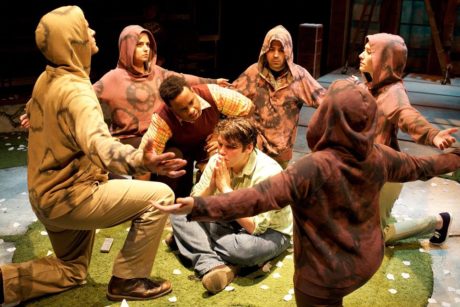
The set, designed collaboratively by Props Designer Becky Mezzanotte and Scenic Change Artist Britney Mongold, was a thing of beauty. Mythical, symbolic overtones were evident in what appeared to be a decaying ruin suggestive of the Garden of Eden, grounded by a lovely trellis with abundant vines and oranges. The triangular set design accentuated the three-part nature of the story, allowing each storyline to unfold in its own area but providing ample space for the action to gravitate toward the beautifully manicured garden path at the center of the stage.
The costume design by Danielle Preston was thought-provoking in that most of the characters were in every-day street clothes. Only Death stood out as a mythical figure in punkish tight black pants and ruffled sleeveless shirt. I appreciated the hooded sweatshirts worn by the chorus. The muted splotchy colors gave them an antiquated feel and when the chorus members put the hoods up they instantly reminded me of Gregorian monks or some other ancient mystical group.
The lighting, sound design and music direction, by Katie McCreary, Veronica J. Lancaster, and Hilary Morrow, complimented the set with atmospheric music and lighting adding a welcome layer of intrigue and otherworldliness.
A Bid to Save the World features A+ performances and a gorgeous set design. I strongly urge you to put it on your ‘should see’ list.
Running Time: One hour and 50 minutes, with no intermission.
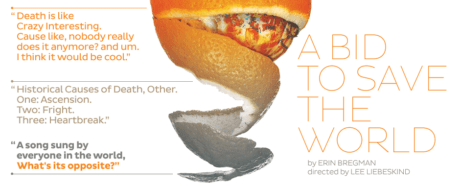
A Bid to Save the World plays through October 2, 2016, at Rorschach Theatre performing at Atlas Center for Performing Arts. For tickets, call (202) 399-7993 ext. 2, or purchase them online.
RATING: ![]()

